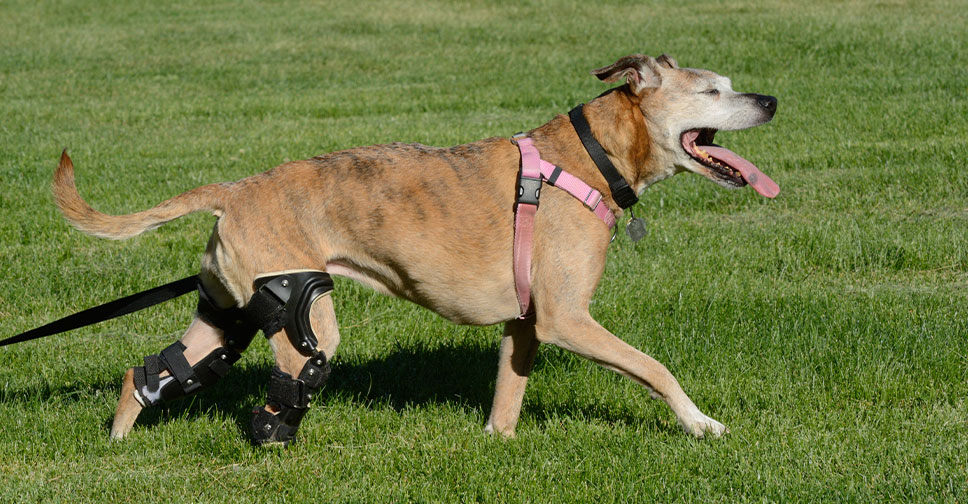
Cruciate Disease
What are the cruciate ligaments?
There are 2 cruciate ligaments in each knee, and we often hear about them through footballers injuring them (“Torn their ACL”). The knee joint in animals is called the stifle and is anatomically like humans but angled quite differently (it is constantly bent vs ours straight as we are upright). The cruciate ligaments are ligaments inside the joint that keep the knee stable. When one or both rupture/break inside the joint the instability causes pain in using the leg.
Some animals have a very sudden rupture – for example when playing ball and become completely lame immediately. Other animals have a slower decline or apparently cope better but generally are still lame to varying degrees. An unstabilised ruptured cruciate ligament will always cause arthritis long term.
What are the options for ruptured cruciate ligaments?
Essentially, the best option is to stabilise the joint and eliminate pain through surgery.
There are different stabilisation techniques available that come with different costs.
The “gold standard” is referral to a specialist for a TPLO (Tibial Plane Levelling Osteotomy). This surgery generally gives the best long-term outcome as it addresses the physiological load on the joint which is the underlying cause of rupture.
Dogs can be walking quite well within a week or two of the procedure, though aftercare and rehabilitation are important. Costs can range from $5000-$8000 for this surgery but checking with the specialist clinic on cost is always best.
At Your Pet’s Vet, our vet Dr Jason Smith is proficient in a technique known as “De Angelis extracapsular” repair. This stabilises the joint by using permanent suture material around the joint. Results can be very functional, but there is always some arthritis long term. The cost of this procedure is around $3000-$3500.
Dogs weighing less than 10 kg may heal without surgery, provided they have severe exercise restriction such as strict cage rest for six weeks and analgesia. Dogs over 10 kg almost always require surgery to stabilise the knee for best results.
It is important to note that if one stifle suffers cruciate rupture, it is common for the opposite leg to rupture in the months to years after, so we advise people to plan for this possibility financially.
What are the long-term outcomes for animals with a ruptured cruciate?
With surgical stabilisation, outcomes can be very good, and with some exercise modifications, the leg will go on to be completely functional.
Without surgery, animals will have varying degrees of arthritis which can affect quality of lifelong term.
